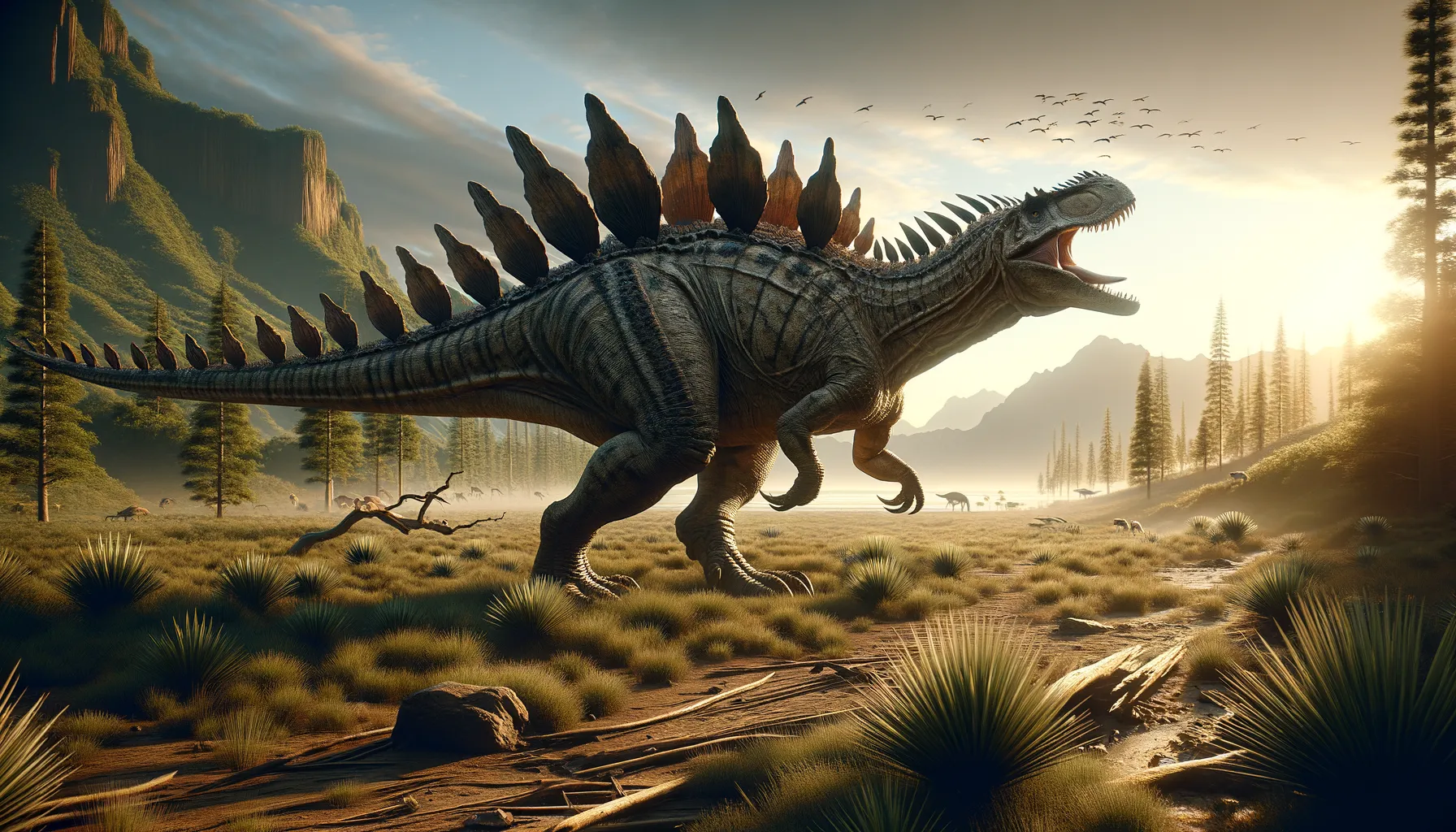
Yingshanosaurus
Discover the spiky ancient wonder!
Period
Jurassic
Length
Its length was about 7 meters.
Height
It stood approximately 3 meters tall.
Weight
It weighed around 2 tons.
Yingshanosaurus was a medium-sized stegosaur known for its distinctive plates and spikes, typical of the stegosaur family. This herbivorous dinosaur roamed what is now China during the Late Jurassic Period. With its robust build and distinctive tail spikes, it was well-equipped to fend off predators. Paleontologists have pieced together its history from fossils, discovering more about its existence from the bones unearthed in the Yingshan region.
Diet
Yingshanosaurus was a herbivore, feeding on low-lying plants and ferns. Its beak-like mouth was adapted for stripping foliage and it likely used its strong teeth to grind plant material.
Hunting
As a herbivore, Yingshanosaurus did not engage in hunting. Instead, it foraged for food among the vegetation of its habitat, possibly using its tail spikes as a defense mechanism against predators.
Environmental challenges
Yingshanosaurus faced environmental challenges such as the need to find sufficient food and avoiding predators like large theropods. Climate shifts could have influenced their habitat, affecting the availability of their preferred plant diet. Additionally, competition with other herbivores for food resources would have been a constant challenge.
Speed
Yingshanosaurus was relatively slow-moving.
Lifespan
Yingshanosaurus likely had a lifespan similar to other stegosaurs, around 30 years.
First discovery
Yingshanosaurus was first discovered in China in the 1980s.
Fun Facts
- Yingshanosaurus was a dinosaur from the Jurassic period, living around 161 to 158 million years ago.
- This dinosaur's name means 'Yingshan lizard,' named after Yingshan County in China where its fossils were found.
- Yingshanosaurus was a herbivorous dinosaur, meaning it primarily fed on plants.
- It is part of the stegosaur family, known for their distinctive rows of bony plates along their backs.
- Yingshanosaurus had a small head compared to its bulky body, a typical feature of stegosaurs.
- Like other members of its family, it likely had a spiked tail that could be used for defense against predators.
Growth and Development
Yingshanosaurus likely followed a growth pattern similar to other stegosaurs, with rapid growth during the juvenile phase before reaching full size. As it matured, the development of its characteristic plates and spikes would have been crucial for thermoregulation and protection. The exact pace of development would have depended on various environmental factors, including the availability of food and climate conditions.
Habitat
Yingshanosaurus inhabited environments with lush vegetation, presumably forested regions with access to abundant plant life. The climate during the Jurassic period offered suitable conditions for its herbivorous lifestyle. These habitats provided both food resources and cover from predators, allowing them to thrive within their ecological niche. Seasonal variations might have influenced their migration patterns in search of optimal feeding grounds.
Interaction with other species
Yingshanosaurus likely coexisted with other dinosaur species, maintaining a herbivore niche within its ecosystem. Interaction with predators would have been frequent, relying on its spikes for defense. Within its habitat, it competed with other plant-eating dinosaurs for resources, forming herds for protection and efficient foraging. Its interactions played a significant role in the balance and function of its ecosystem.
Natural lifespan
Naturally, Yingshanosaurus might have lived for about 30 years.
Reproduction
Yingshanosaurus likely reproduced by laying eggs, as with other dinosaurs. Mating rituals may have involved displays of their distinctive plates and tail spikes. After laying eggs in nests, parental care would have been minimal, with hatchlings needing to fend for themselves shortly after birth.
Social behaviour
Yingshanosaurus may have exhibited social behavior by forming small herds, offering protection from predators and efficiency in foraging. Such group dynamics could enhance survival, especially in regions with varied predator presence. The herd structure might have allowed younger or weaker members to stay shielded within the group's center.
Fossil locations
Fossils of Yingshanosaurus have been found in the Yingshan area of China, contributing significantly to our understanding of Late Jurassic dinosaur diversity. These findings have provided insight into its skeletal structure, enabling further study on the evolution of stegosaurs. The fossils are a crucial link to the rich prehistoric biodiversity of the region.
